OFF THE SHELF #17: Down Country Roads: LGBT Rural Life and Communities
By Rob Ridinger
In memory of Matthew Shepard (1976-1998)
An enduring part of LGBT mythology has been the story of the small-town man or woman who claims an identity outside the heterosexual mainstream culture in which they have been immersed from childhood, and is forced by circumstances ranging from expulsion by their biological families to loss of jobs to pack their bags and head for the nearest large urban center where they can become part of a community of people like themselves. This tale has figured in the plot lines of numerous novels at least since the 1950s and has obscured the fact that many women and men have no desire or ability to join the lavender migration, preferring life in a smaller city or town and building challenged but successful lives there with various degrees of integration with their neighbors. A sampling of the literature generated by and about these local LGBT worlds across the planet over the past four decades provides some unexpected surprises.
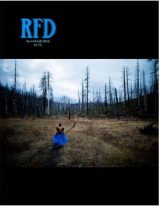 The journey begins with the publication in the autumn of 1974 of the first issue of the quarterly magazine RFD, which appropriated the initials of the U.S. Postal Service mail code for “rural free delivery “as its title. As noted on its website, this periodical (still being produced by a collective forty-two years later) centered its attention on life in the country and alternative lifestyles, including “foster community building and networking, explore the diverse expressions of our sexuality, care for the environment, radical faerie consciousness, nature-centered spirituality. “Each issue had a title based on the creative use of the letters RFD, an example being the first issue, whose theme was “Rustic Fairy Dreams.” RFD has filled the role of the journal of record for the Radical Faerie movement since 1979, and, while many LGBT people living outside urban centers do not identify with this community, it also made history by establishing that rural LGBT people had their own voices and experiences which were often not well represented in the mainstream gay and lesbian press. An example of the latter was the limited degree of coverage given to rural gay life by The ADVOCATE from the late 1960s to the appearance of AIDS in 1981. At about the same time that the first issue of RFD was being published, The ADVOCATE printed a story in its November 6, 1974 issue entitled “Gay Liberation in the Ozarks: We’re Not Ashamed.”, reporting on successful local gay community organizing in Joplin, Missouri. This was followed in the July 26, 1978 issue by a longer story appearing as “Smokestacks, Haystacks, and to Bed We Go: Gay Life in Rural Pennsylvania.” The ADVOCATE’s coverage of LGBT life in the country would improve over the next three decades.
The journey begins with the publication in the autumn of 1974 of the first issue of the quarterly magazine RFD, which appropriated the initials of the U.S. Postal Service mail code for “rural free delivery “as its title. As noted on its website, this periodical (still being produced by a collective forty-two years later) centered its attention on life in the country and alternative lifestyles, including “foster community building and networking, explore the diverse expressions of our sexuality, care for the environment, radical faerie consciousness, nature-centered spirituality. “Each issue had a title based on the creative use of the letters RFD, an example being the first issue, whose theme was “Rustic Fairy Dreams.” RFD has filled the role of the journal of record for the Radical Faerie movement since 1979, and, while many LGBT people living outside urban centers do not identify with this community, it also made history by establishing that rural LGBT people had their own voices and experiences which were often not well represented in the mainstream gay and lesbian press. An example of the latter was the limited degree of coverage given to rural gay life by The ADVOCATE from the late 1960s to the appearance of AIDS in 1981. At about the same time that the first issue of RFD was being published, The ADVOCATE printed a story in its November 6, 1974 issue entitled “Gay Liberation in the Ozarks: We’re Not Ashamed.”, reporting on successful local gay community organizing in Joplin, Missouri. This was followed in the July 26, 1978 issue by a longer story appearing as “Smokestacks, Haystacks, and to Bed We Go: Gay Life in Rural Pennsylvania.” The ADVOCATE’s coverage of LGBT life in the country would improve over the next three decades.
In 1977, the documentary film Word Is Out appeared, bringing gay and lesbian lives openly to the screen. Among the people who agreed to be interviewed for the project were lesbians living in the country, both alone and in a group situation and a gay man from a farm family who became an actor. Its content was also published in book form. The next item on rural LGBT life to appear was a two-page article in the 1982 anthology Lesbian Studies: Present and Future, assembled by Margaret Cruikshank. Written by a counselor at a small state university in Minnesota, “Harassment in Rural America” recounts an unsuccessful effort to establish a lesbian support group at the institution and the abusive reaction to a publicity notice in the local paper. While several gay men and lesbians subsequently came out to the author in her practice as a result of the ad for the support group, no lasting organization was created. During the 1980s as the AIDS pandemic began to impact all LGBT communities regardless of location, many rural gay men found themselves becoming activists to help preserve not only their own lives but the local worlds they had grown up in. An excellent example of such a transformation took place in North Dakota, when Bismarck librarian and puppeteer Darrel Hildebrant, son of a sheep rancher, created The Coalition, the first AIDS activist organization in the state, and traveled widely speaking on AIDS prevention across the state, putting a human face on the epidemic and, in the process, becoming the most widely known gay man in North Dakota. The presence of AIDS in rural LGBT life was also the subject of Joanne McCarthy’s 1988 social work thesis at California State University, The Psychosocial Impact of Aids and Related Health Concerns upon Gay Men in a Rural Community. In later years, a body of dissertations focusing attention on aspects of rural gay and lesbian life from the perspectives of social work, education, sociology, psychology, communications, gerontology, history, geography, and anthropology would emerge.
The 1980s also saw the birth of publications created by and for rural LGBT people to serve as forums for discussion of issues and assist in the growth of a sense of community, such as Among Friends: News Magazine For Gays and Lesbians of the Upper Midwest, published in Madison, Wisconsin from 1983 to 1989, and the short-lived Midwest Times, published in Chicago beginning in January 1981. However, in some areas, the LGBT paper of the major population center served as the newspaper of record for local news from across the state, as in the case of Equal Time in Minnesota. This trend continued into the next decade, when several newspapers appeared serving a predominately rural audience. They included Heartland: The Midwest’s Gay and Lesbian Newspaper (which appeared in Indianapolis from February 1990 to June 1991), Rockford, Illinois’ Rock River News, the Pioneers Newsletter of the Rural Southwest Wisconsin Gay and Lesbian Alliance (begun in 1994) and the Prairie Flame, published monthly in Springfield, Illinois from 1996 to 2008. The creation of the Internet gave rural LGBT people direct access to information and contacts free of the problems associated with print media and allowed them to share in the evolving LGBT communities of their countries.
The 1990s were the decade when gays and lesbians living in small towns began appearing as the subject of documentary films, adding visual records to the bodies of print testimony provided by the local and regional LGBT media. In 1991, Jean-François Brunet and Peter Friedman created Fighting in Southwest Louisiana: Gay Life in Rural America, whose subject, Danny Cooper, was a local mailman in a small Louisiana town who had been open about his sexual orientation since his teens and lived openly with his lover. During the next two years, Ellen Spiro packed her cameras into her van and set off across the rural South to meet and film its gay and lesbian residents. The result was the 1993 film Greetings from Out Here, the first Independent Television Service program to be broadcast nationally, winning numerous awards at film festivals in 1994 and the Documentary Achievement Award from the American Motion Picture Society in 1995. It was followed in 1996 by Horse Dreams in BBQ Country centering on the lives of two gay ranchers in south Texas who had been together for fourteen years.
Print coverage of rural LGBT life continued in parallel to the new films. In 1995, Routledge published the anthology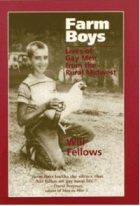 Mapping Desire: Geographies of Sexualities, edited by David Bell and Gil Valentine, and among its chapters was Jerry Lee Kramer‘s “Bachelor Farmers and Spinsters: Gay and Lesbian Identities and Communities in Rural North Dakota.” 1996 was the year when the stream of book-length writings on rural LGBT people made its debut, in three groundbreaking volumes from the United States and Canada. Farm Boys: Lives of Gay Men from the Rural Midwest, collected and edited by Will Fellows was published by the University of Wisconsin Press. Its counterpart over the border is Out Our Way: Gay and Lesbian Life in the Country, a collection of over two hundred interviews with lesbians and gay men across rural Canada gathered by Michael Riordon, a former writer for the Toronto LGBT paper of record The Body Politic. This title is less represented in American libraries than Farm Boys, as an examination of its record in WORLDCAT shows that, of the 106 libraries which own it, sixty-one are Canadian, and several Midwestern and Great Plains state holdings show no copies at all. The University of Minnesota Press continued the anthology approach using literature as a lens with Reclaiming the Heartland: Lesbian and Gay Voices from the Midwest, edited by Karen Lee Osborne and William Spurlin. In his 1997 survey Life Outside: the Signorile Report on Gay Men, Sex, Drugs, Muscles, and the Passages of Life, Out magazine columnist Michelangelo Signorile included a chapter on “The De-urbanization of Homosexuality” recognizing the significance of local LGBT communities. The same year, Harrington Park Press released the collection Rural Gays and Lesbians: Building On The Strength Of Communities.
Mapping Desire: Geographies of Sexualities, edited by David Bell and Gil Valentine, and among its chapters was Jerry Lee Kramer‘s “Bachelor Farmers and Spinsters: Gay and Lesbian Identities and Communities in Rural North Dakota.” 1996 was the year when the stream of book-length writings on rural LGBT people made its debut, in three groundbreaking volumes from the United States and Canada. Farm Boys: Lives of Gay Men from the Rural Midwest, collected and edited by Will Fellows was published by the University of Wisconsin Press. Its counterpart over the border is Out Our Way: Gay and Lesbian Life in the Country, a collection of over two hundred interviews with lesbians and gay men across rural Canada gathered by Michael Riordon, a former writer for the Toronto LGBT paper of record The Body Politic. This title is less represented in American libraries than Farm Boys, as an examination of its record in WORLDCAT shows that, of the 106 libraries which own it, sixty-one are Canadian, and several Midwestern and Great Plains state holdings show no copies at all. The University of Minnesota Press continued the anthology approach using literature as a lens with Reclaiming the Heartland: Lesbian and Gay Voices from the Midwest, edited by Karen Lee Osborne and William Spurlin. In his 1997 survey Life Outside: the Signorile Report on Gay Men, Sex, Drugs, Muscles, and the Passages of Life, Out magazine columnist Michelangelo Signorile included a chapter on “The De-urbanization of Homosexuality” recognizing the significance of local LGBT communities. The same year, Harrington Park Press released the collection Rural Gays and Lesbians: Building On The Strength Of Communities.
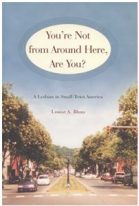 The new millennium began with an unusual event, the portrayal of rural gay life in a film made by a mainstream studio. The 2000 release Big Eden took as its theme the return of a gay man to his small Montana town and his navigation of two relationships as he coped with a world he had left behind. The film won awards at such major LGBT film festivals as Outfest and was nominated for a GLAAD Media Award. It was joined in 2000 by two other theses on aspects of rural LGBT life, Stephen Whitaker’s Accountable Heterosexuality: The Performative Gender Strategies of Rural Gay Men From Appalachia from the University of Cincinnati, and Exploration of the Effects of Rural Gay and Lesbian Support Groups on Internalized Homophobia, by Patrick E. Borel, another social work thesis done at California State University, Sacramento. The reaction of local folk to an open lesbian and her partner as they decide to have a child was deftly chronicled by Louise Blum in her 2001 memoir from the University of Wisconsin Press, You’re Not From Around Here, Are You? A Lesbian in Small-town America. 2002 witnessed the expansion of the concept of “rural “beyond the confines of North America with the publication of Anthony Galvin’s The Marginalization of Rural Gay Men Ireland, by University College Dublin. And the world of gay men in the deepest South opened by the 1991 film on Danny Cooper was revisited in 2003 by Thomas B. Davis in his family therapy dissertation on Perceptions and Experiences of Growing up Gay in Rural Louisiana: A Reflexive Ethnography of Six Gay Men, done at the University of Louisiana at Monroe.
The new millennium began with an unusual event, the portrayal of rural gay life in a film made by a mainstream studio. The 2000 release Big Eden took as its theme the return of a gay man to his small Montana town and his navigation of two relationships as he coped with a world he had left behind. The film won awards at such major LGBT film festivals as Outfest and was nominated for a GLAAD Media Award. It was joined in 2000 by two other theses on aspects of rural LGBT life, Stephen Whitaker’s Accountable Heterosexuality: The Performative Gender Strategies of Rural Gay Men From Appalachia from the University of Cincinnati, and Exploration of the Effects of Rural Gay and Lesbian Support Groups on Internalized Homophobia, by Patrick E. Borel, another social work thesis done at California State University, Sacramento. The reaction of local folk to an open lesbian and her partner as they decide to have a child was deftly chronicled by Louise Blum in her 2001 memoir from the University of Wisconsin Press, You’re Not From Around Here, Are You? A Lesbian in Small-town America. 2002 witnessed the expansion of the concept of “rural “beyond the confines of North America with the publication of Anthony Galvin’s The Marginalization of Rural Gay Men Ireland, by University College Dublin. And the world of gay men in the deepest South opened by the 1991 film on Danny Cooper was revisited in 2003 by Thomas B. Davis in his family therapy dissertation on Perceptions and Experiences of Growing up Gay in Rural Louisiana: A Reflexive Ethnography of Six Gay Men, done at the University of Louisiana at Monroe.
Will Fellows continued his research begun in Farm Boys by examining the social roles played by gay men as stewards of local historical pasts in his 2004 work A Passion to Preserve: Gay Men as Keepers Of Culture. Other rural-related publications that year were the article by Colin Johnson in the Encyclopedia of Lesbian, Gay, Bisexual, And Transgender History In America covering “Urban, Suburban, and Rural Geographies” and Carol Snively’s essay “Building Community-based Alliances Between GLBTQQA Youth And Adults In Rural Settings” in Gay and Lesbian Rights Organizing : Community-based Strategies from Harrington Park Press. But 2004 is best known for the airing of the first documentaries on rural LGBT life since 1996. The first, Farm Family: In Search of Gay Life in Rural America (created by a writer who grew up on a Midwest dairy farm) relates his own story as well as presenting interviews with others from similar rural backgrounds in New Mexico, Pennsylvania, Michigan, Wisconsin, and Wyoming ranging from radical faeries to men raising children and other dairy farmers. The second 2004 documentary film bears a title which will be familiar to anyone who ever listened to Garrison Keillor’s popular radio show, A Prairie Home Companion. Bachelor Farmer presents the stories of four people who live in a small Idaho town of fewer than 400 people and the ways in which they have fitted themselves to local expectations while achieving a degree of openness in their identities
2005 was, of course, the year when Brokeback Mountain brought a male love story out of the rural American West to theaters across the country. But in Rural Social Work Practice (a collection of essays on the status of this field from Columbia University Press, published that same year) Chatman Neely’s essay on “Gay Men and Lesbians in Rural Areas: Acknowledging, Valuing, and Empowering This Stigmatized Invisible People” spoke to the realities of the world being portrayed onscreen by Heath Ledger.
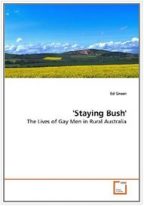 The last decade has seen a continued growth in the genres of information speaking about and depicting LGBT life in rural areas. Documentary coverage continued with a focus on an institution which offers in many cases the only point of contact for gay men and lesbians. Small Town Gay Bar looks at two bars in different Mississippi towns and visits an Alabama community where a gay man was murdered. The Brokeback phenomenon is analyzed in Eric Patterson’s On Brokeback Mountain: Meditations about Masculinity, Fear, And Love in The Story and the Film, published in 2008 by Lexington Press.
The last decade has seen a continued growth in the genres of information speaking about and depicting LGBT life in rural areas. Documentary coverage continued with a focus on an institution which offers in many cases the only point of contact for gay men and lesbians. Small Town Gay Bar looks at two bars in different Mississippi towns and visits an Alabama community where a gay man was murdered. The Brokeback phenomenon is analyzed in Eric Patterson’s On Brokeback Mountain: Meditations about Masculinity, Fear, And Love in The Story and the Film, published in 2008 by Lexington Press. 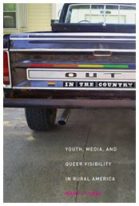 The pool of literature on rural LGBT life outside North America was also expanded that year by “Staying Bush”: The Lives Of Gay Men In Rural Australia, by Edward John Green, the publication in book form of the author’s Ph.D. dissertation in social work at the University of New South Wales. Rural northwest Pennsylvania is the landscape for the next documentary, Out in the Silence, which takes as its subject the extreme bullying of an out teen in Oil City. The film, released in August 2009, has since been the centerpiece of the Out in the Silence Campaign for Fairness and Equality in Rural and Small Town America, an effort which has held several hundred screenings in local communities to increase recognition of LGBT people and promote constructive dialogue. Print works from 2009 include the collection Out In Public: Reinventing Lesbian/Gay Anthropology In A Globalizing World, edited by Ellen Lewin with the chapter “Back and forth to the land: negotiating rural and urban sexuality among the Radical Faeries”, by Scott Morgensen, and Mary Gray’s look at rural LGBT youth in Kentucky, Out In The Country: Youth, Media, And Queer Visibility in Rural America.
The pool of literature on rural LGBT life outside North America was also expanded that year by “Staying Bush”: The Lives Of Gay Men In Rural Australia, by Edward John Green, the publication in book form of the author’s Ph.D. dissertation in social work at the University of New South Wales. Rural northwest Pennsylvania is the landscape for the next documentary, Out in the Silence, which takes as its subject the extreme bullying of an out teen in Oil City. The film, released in August 2009, has since been the centerpiece of the Out in the Silence Campaign for Fairness and Equality in Rural and Small Town America, an effort which has held several hundred screenings in local communities to increase recognition of LGBT people and promote constructive dialogue. Print works from 2009 include the collection Out In Public: Reinventing Lesbian/Gay Anthropology In A Globalizing World, edited by Ellen Lewin with the chapter “Back and forth to the land: negotiating rural and urban sexuality among the Radical Faeries”, by Scott Morgensen, and Mary Gray’s look at rural LGBT youth in Kentucky, Out In The Country: Youth, Media, And Queer Visibility in Rural America.
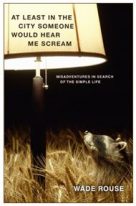 Wade Rouse added a humorous self-portrait of his move to rural Michigan from Chicago (paralleling the personal story Michael Riordon interweaves throughout Out Our Way) in his 2009 memoir At Least in the City Someone Would Hear Me Scream: Misadventures in Search of the Simple Life. The northern plains LGBT world was well represented in graduate work in 2010, with such works as Place, Politics, And Gay and Lesbian Life in Grand Forks, North Dakota, by Alison Rood (done at the University of North Dakota) and Old Coyotes: Life Histories of Aging Gay Men in Rural Canada, from Barry Trentham at the University of Toronto. A thoughtful exploration of urban centers and their roles in the worldview of LGBT people who live outside them is provided by a second 2010 title, Scott Herring’s Another Country: Queer Anti-Urbanism. In 2011, the University of Nevada Press issued the anthology City Dreams, Country Schemes: Community and Identity in the American West which contains Peter Boag’s paper on “Gay Male Rural-Urban Migration in the American West.” The Challenges Of Being A Rural Gay Man: Coping With Stigma, by Deborah Bray Preston and Anthony R. D’Augelli, a 2013 title from Routledge, is based on interviews with 414 gay men in rural Pennsylvania and centers on in-depth interviews with fifteen of them, examining the subjects of how they relate to their communities, families, establishing a sexual identity and relationships.
Wade Rouse added a humorous self-portrait of his move to rural Michigan from Chicago (paralleling the personal story Michael Riordon interweaves throughout Out Our Way) in his 2009 memoir At Least in the City Someone Would Hear Me Scream: Misadventures in Search of the Simple Life. The northern plains LGBT world was well represented in graduate work in 2010, with such works as Place, Politics, And Gay and Lesbian Life in Grand Forks, North Dakota, by Alison Rood (done at the University of North Dakota) and Old Coyotes: Life Histories of Aging Gay Men in Rural Canada, from Barry Trentham at the University of Toronto. A thoughtful exploration of urban centers and their roles in the worldview of LGBT people who live outside them is provided by a second 2010 title, Scott Herring’s Another Country: Queer Anti-Urbanism. In 2011, the University of Nevada Press issued the anthology City Dreams, Country Schemes: Community and Identity in the American West which contains Peter Boag’s paper on “Gay Male Rural-Urban Migration in the American West.” The Challenges Of Being A Rural Gay Man: Coping With Stigma, by Deborah Bray Preston and Anthony R. D’Augelli, a 2013 title from Routledge, is based on interviews with 414 gay men in rural Pennsylvania and centers on in-depth interviews with fifteen of them, examining the subjects of how they relate to their communities, families, establishing a sexual identity and relationships.
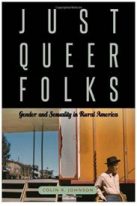 Colin Johnson’s Just Queer Folks: Gender and Sexuality in Rural America from Temple University Press takes a broader view, looking at how country life has defined sexuality and morality in a variety of situations including the Civilian Conservation Corps. And the most recent film on rural LGBT people in North America, Out Here: A Documentary Film About the Hearts and Hard Work of Queer Farmers In the U.S. also appeared in 2013 after four years in production by the Queer Farmers Film Project. Its aim was to explore such issues as what it means to claim an identity as both a farmer and someone who defines themselves as queer, agriculture as a space where queer people can be active, and how they relate to the nation’s food system. Australia’s rural gay population and their environment returned to film in October 2014 with the television documentary Growing Up Gay in Rural Australia, which looked at conditions of LGBT life in two towns in New South Wales through stories of local people who had both left and stayed behind. It was accompanied by an essay written by Colin Johnson, author of Just Queer Folks, “Men and Women Like That: Regional Identities and Rural Sexual Cultures in the South and Pacific Northwest” in Understanding and Teaching U.S. Lesbian, Gay, Bisexual, and Transgender History edited by Leila Rupp and Susan Freeman. And the most recent edited volume on rural LGBT life, Queering the Countryside: New Frontiers in Rural Queer Studies presents fifteen papers that illustrate the degree to which LGBT lives and times in communities outside the mainstream have become woven into developing and historical LGBT research in a wide range of academic fields. The voices of women and men whose days are woven into small town and rural landscapes around the planet will continue to be heard within our global LGBT community and through the pages of books yet to come.
Colin Johnson’s Just Queer Folks: Gender and Sexuality in Rural America from Temple University Press takes a broader view, looking at how country life has defined sexuality and morality in a variety of situations including the Civilian Conservation Corps. And the most recent film on rural LGBT people in North America, Out Here: A Documentary Film About the Hearts and Hard Work of Queer Farmers In the U.S. also appeared in 2013 after four years in production by the Queer Farmers Film Project. Its aim was to explore such issues as what it means to claim an identity as both a farmer and someone who defines themselves as queer, agriculture as a space where queer people can be active, and how they relate to the nation’s food system. Australia’s rural gay population and their environment returned to film in October 2014 with the television documentary Growing Up Gay in Rural Australia, which looked at conditions of LGBT life in two towns in New South Wales through stories of local people who had both left and stayed behind. It was accompanied by an essay written by Colin Johnson, author of Just Queer Folks, “Men and Women Like That: Regional Identities and Rural Sexual Cultures in the South and Pacific Northwest” in Understanding and Teaching U.S. Lesbian, Gay, Bisexual, and Transgender History edited by Leila Rupp and Susan Freeman. And the most recent edited volume on rural LGBT life, Queering the Countryside: New Frontiers in Rural Queer Studies presents fifteen papers that illustrate the degree to which LGBT lives and times in communities outside the mainstream have become woven into developing and historical LGBT research in a wide range of academic fields. The voices of women and men whose days are woven into small town and rural landscapes around the planet will continue to be heard within our global LGBT community and through the pages of books yet to come.
References
Adair, Nancy and Casey. Word Is Out: Stories Of Some Of Our Lives. New York: Delacorte Press and New Glide Press, San Francisco, 1977.
Among Friends: News Magazine for Gays and Lesbians of the Upper Midwest. Madison, Wisconsin: Among Friends, 1983- 1989.
Bachelor Farmer Directed by Michael Culpepper and Nikki Draper. New York: Filmmakers Library. 2004.
Big Eden. San Francisco, California: Chaiken Films, 2000.
Blum, Louise. You’re Not from Around Here, Are You? A Lesbian in Small-town America. Madison, Wisconsin: University of Wisconsin Press, 2001.
Boag, Peter. “Gay Male Rural-Urban Migration In The American West.” in City Dreams, Country Schemes: Community and Identity in the American West edited by Kathleen Brosnan and Amy Scott. Reno: University of Nevada Press, 2011 : 284-305.
Borel, Patrick E. Exploration of the Effects of Rural Gay and Lesbian Support Groups on Internalized Homophobia. M.S.W. thesis, California State University, Sacramento. 2000.
Brokeback Mountain directed by Ang Lee. Universal City, California : Universal, 2005.
Davis, Thomas B. Perceptions and Experiences of Growing Up Gay in Rural Louisiana: A Reflexive Ethnography of Six Gay Men Ph.D. thesis, University of Louisiana at Monroe, 2003.
Farm Boys : Lives of Gay Men from the Rural Midwest collected and edited by Will Fellows. Madison, Wisconsin : University of Wisconsin Press, c1996.
Farm Family: In Search of Gay Life in Rural America . Sarasota, Florida: T Joe Murray Videos, 2004.
Fellows, Will. A Passion To Preserve: Gay Men as Keepers Of Culture. Madison: University of Wisconsin Press, 2004.
Fighting in Southwest Louisiana: Gay Life In Rural America directed by Jean-François Brunet and Peter Friedman . New York, N.Y. : Filmmakers Library, 1991.
Galvin, Anthony. The Marginalization Of Rural Gay Men Ireland by Dublin: University College Dublin, 2002.
“Gay Liberation in The Ozarks: ‘We’re Not Ashamed.” The ADVOCATE ( November 6, 1974 ) v. 150 : 24.
Gray, Mary L.. Out In The Country: Youth, Media, And Queer Visibility in Rural America . New York : New York University Press, 2009 .
Green, Ed. “Staying Bush”: The Lives of Gay Men in Rural Australia. Ph.D. dissertation University of New South Wales. Saarbrucken, Germany : VDM Verlag Dr. Müller, 2008.
“Greetings From Out Here.” https://en.wikipedia.org/wiki/Greetings_from_Out_Here Accessed July 21 2016.
Greetings From Out Here. Chicago, IL: Video Data Bank, 1993.
Growing Up Gay In Rural Australia. SBS The Feed http://www.sbs.com.au/news/thefeed/story/growing-gay-rural-australia . Aired 3 October 2014.
Heartland: The Midwest’s Gay and Lesbian Newspaper. Indianapolis, Indiana : Phoenix Publications, February 1990-June 1991.
Heckman, Jason. “Smokestacks, Haystacks and To Bed We Go : Gay Life In Rural Pennsylvania. “ The ADVOCATE v.246 (July 26 1978 ) : 9-10.
Herring, Scott. Another Country: Queer Anti-Urbanism. New York: New York University Press, 2010.
Horse Dreams In BBQ Country. San Francisco: Frameline, 1996.
Johnson, Colin. Just Queer Folks : Gender and Sexuality in Rural America. Philadelphia: Temple University Press, 2013.
Johnson, Colin. “ Men and Women Like That: Regional Identities and Rural Sexual Cultures in the South and Pacific Northwest “ in Understanding and Teaching U.S. Lesbian, Gay, Bisexual, and Transgender History edited by Leila Rupp and Susan Freeman. Madison, Wisconsin: University of Wisconsin Press, 2014: 166-177.
Johnson, Colin R. “ Urban, Suburban, and Rural Geographies “ in Encyclopedia of Lesbian, Gay, Bisexual, And Transgender History In America : 217-222.
Kramer, Jerry Lee. ““ Bachelor Farmers and Spinsters : Gay and Lesbian Identities and Communities in Rural North Dakota “ in Mapping Desire : Geographies of Sexualities edited by David Bell and Gil Valentine. London; New York: Routledge,1995 : 200-213.
McCarthy, Joanne. The Psychosocial Impact Of Aids And Related Health Concerns Upon Gay Men In A Rural Community . M.S.W. dissertation, California State University, Fresno, 1988.
Mapping Desire: Geographies of Sexualities edited by David Bell and Gil Valentine. London ; New York : Routledge, 1995.
Midwest Times. Chicago, Illinois: January 1981-
Morgensen , Scott. “Back and Forth to the Land: Negotiating Rural and Urban Sexuality among the Radical Faeries “in Out in Public: Reinventing Lesbian/Gay Anthropology in a Globalizing World edited by Ellen Lewin. Chichester, U.K ; Wiley-Blackwell, 2009 : 143-163.
Neely, Chatman. “ Gay Men and Lesbians in Rural Areas : Acknowledging, Valuing, and Empowering This Stigmatized Invisible people “ in Rural Social Work Practice edited by Nancy Lohmann and Roger A. Lohmann. New York: Columbia University Press, 2005 : 232-254.
Out Here : A Documentary Film About The Hearts and Hard Work of Queer Farmers In the U.S . Queer Farmers Film Project, 2013.
Out In The Silence. Washington, D.C.: Garden Thieves Pictures, 2009.
Patterson, Eric. On Brokeback Mountain: Meditations About Masculinity, Fear, And Love in The Story And The Film. Lanham, Maryland: Lexington Press. 2008.
Pioneers Newsletter. Rural Southwest Wisconsin Gay and Lesbian Alliance, 1994.
Prairie Flame. Springfield, Illinois: Buff Carmichael, 1996-2008.
Preston, Deborah Bray and Anthony R. D’Augelli . The Challenges of Being A Rural Gay Man: Coping With Stigma. New York: Routledge, 2013.
Q24 Ellen Spiro: “Greetings From Out Here” (1993) . From Network Q Out Across America Episode 24 October 1993. https://www.youtube.com/watch?v=vLC7AgnqLLQ Accessed July 21 2016.
Queering The Countryside : New Frontiers In Rural Queer Studies edited by Mary L. Gray , Brian J. Gilley and Colin R. Johnson. New York: New York University Press, 2016.
Reclaiming the Heartland : Lesbian and Gay Voices from the Midwest edited by Karen Lee Osborne, and William J. Spurlin. Minneapolis : University of Minnesota Press, 1996.
RFD. http://www.rfdmag.org/
Ridinger, Robert. “Local and Regional Views “in St James Press Gay and Lesbian Almanac. Detroit: St. James Press, 1998: 631-647.
Riordon, Michael. Out Our Way : Gay and Lesbian Life in the Country .Toronto : Between The Lines, 1996.
Rock River News (publisher not identified, Rockford, Illinois) 1990-
Rood, Alison. Place, Politics, And Gay and Lesbian Life In Grand Forks, North Dakota . M.A. thesis, University of North Dakota, 2010.
Rouse, Wade. At Least In The City Someone Would Hear Me Scream: Misadventures In Search of the Simple Life. New York: Harmony Books, 2009.
Rural Gays and Lesbians: Building On The Strength Of Communities. Rural Gays and Lesbians: Building on the Strengths of Communities edited by James Donald Smith and Ronald J. Mancoske. New York: Haworth Press, 1997.
Rural Social Work Practice edited by Nancy Lohmann and Roger A. Lohmann. New York: Columbia University Press, 2005.
Signorile, Michelangelo. “The De-Urbanization of Homosexuality “ in Life Outside : the Signorile Report On Gay Men, Sex, Drugs, Muscles, and the Passages of Life . New York: HarperPerennial, 1998: 181-207.
Signorile, Michelangelo. Life Outside: the Signorile Report on Gay Men, Sex, Drugs, Muscles, and the Passages of Life. New York: HarperPerennial, 1998.
Small Town Gay Bar. View Askew Productions, 2006.
Snively, Carol. A. “Building Community-based Alliances between GLBTQQA Youth and Adults in Rural Settings “in Gay and Lesbian Rights Organizing: Community-based Strategies. Binghamton, New York: Harrington Park Press 2004: 99-112.
Sturtz, Sue. “Harassment in Rural America” in Lesbian Studies: Present and Future edited by Margaret Cruikshank. Old Westbury, New York: Feminist Press, 1982 : 20-21.
Trentham, Barry. Old Coyotes: Life Histories of Aging Gay Men in Rural Canada. Ph.D dissertation, University of Toronto, 2010.
Whitaker, Stephen Paul. Accountable Heterosexuality: The Performative Gender Strategies of Rural Gay Men From Appalachia. M.A. thesis, University of Cincinnati, 2000.
Word Is Out: Stories of Some Of Our Lives. Mariposa Films, 1977.
Copyright R. Ridinger 2016
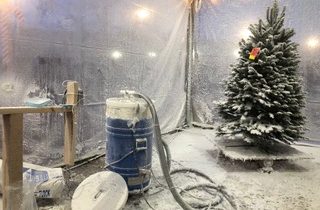
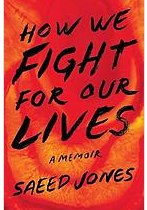
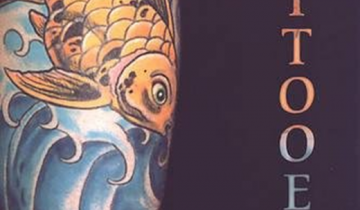
This has proved to be such a brilliant resource for an essay i’m doing on depictions of rural space in LGBT cinema. Thank you for your amazing work.